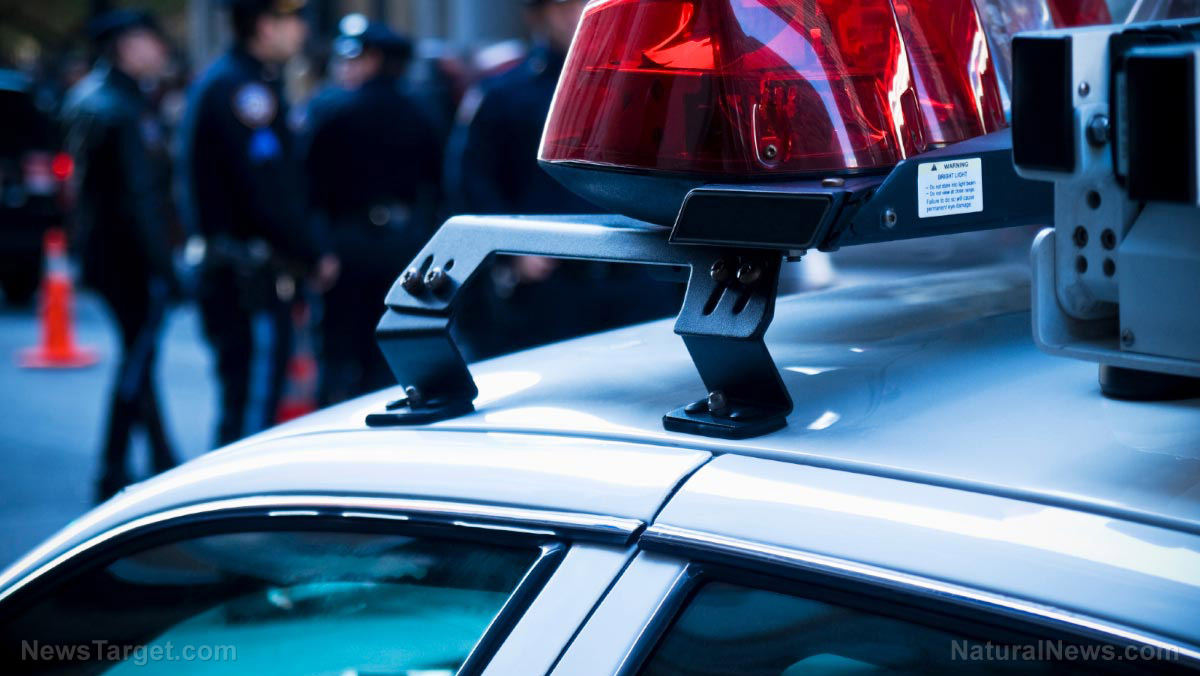
During the NYPD breakfast in Midtown hosted by the New York City Police Foundation, Police Commissioner Keechant Sewell boasted that the "NYPD RMP is iconic." RMP stands for radio motor patrol, a name coined decades ago and still often used for marked NYPD vehicles.
The Big Apple police department, which employs more people than the Federal Bureau of Investigation (FBI), said they are having 11,000 surveillance police vehicles that would have QR codes printed on the outside of the cars that the public can scan and connect to the NYPD website.
Sewell said the new design will "ensure the safety of our officers, have a QR code to improve customer service and a revamped interior for a more efficient and comfortable work environment for our officers."
"If and when the public finally cares about losing their privacy, all they have to do is scan a police vehicle's QR code. This will bring them to a carefully worded law enforcement website that will reassure them that the government really cares about their privacy and that 360-degree surveillance cameras are for the public's safety," civil rights and privacy issues blogger Joe Cadillic said in his Substack entry.
"When a concerned citizen approaches a 360-degree police surveillance vehicle, they may be surprised to find out what is really happening inside."
According to him, NYPD's Ford Police Interceptors come with a factory-installed version of "surveillance mode" or a built-in "police perimeter alert," which automatically analyzes people for perceived threats.
He added that the perimeter alert uses BLIS®, or blind spot information system that sensors for approximately 270-degree monitoring outside of the vehicle. It features a visual display in the instrument panel cluster that shows moving objects, the motion trail and potential threat level. When potentially threatening behavior is detected, it will sound a chime, activate the rearview camera and automatically roll up the windows and lock the doors.
The owner's manual of the said vehicle also warns that "sensor reflections from stationary objects may cause false objects to briefly appear on the police perimeter alert system display." Things like dirt, mud, snow and rain could automatically roll up a police officer's windows and lock their doors, sending them into panic mode thinking they are being targeted by an unassuming citizen.
Cadillic also explained that the privacy ramifications of police cars with 360-degree surveillance cameras can make everyone a suspect in the government's eyes. "Moms with baby strollers, dog walkers, bike riders, pedestrians, motorists and their passengers and public transit passengers all become suspects in the eyes of America's unchecked police surveillance state," he warned.
Beverly Hills police department surveillance tech levels up
On the other side of America, the high-end Los Angeles suburb Beverly Hills, home to some of the wealthiest and most renowned personalities and a globally recognized address for luxury and wealth, operates more than 2,000 security cameras – one for every 16 residents, making it one of the most closely surveilled communities in the world.
Moreover, Bloomberg reported that the two-mile stretch of Rodeo Drive has 29 security cameras, soon to be fitted with four additional devices that specialize in collecting photos of license plates and tracking the movement of cars. Overhead, a police-run drone program, which launched in December 2021, has grown from a pilot to a seven-day-a-week operation that can cover three-quarters of the city.
The affluent community is expecting more cameras, plus automatic license plate readers to be installed in the city's parking garages and "every major intersection in and out of the city," Beverly Hills Police Department Chief Mark Stainbrook said when he briefed the city council on Aug. 23.
The citywide security upgrade aimed for "ubiquitous coverage," according to then-assistant city manager Nancy Hunt-Coffey in August 2020, when the city approved a five-year, $14 million proposal for more cameras.
Privacy and civil liberties advocates have already voiced concerns about how the surveillance data is collected and analyzed and its potential to track a person's movement over time. (Related: Atlas of Surveillance database reveals THOUSANDS of law enforcement agencies unlawfully surveilling Americans.)
Hamid Khan, a member of the Stop LAPD Spying Coalition, said the growing use of the type of technology embraced by Beverly Hills PD has "fundamentally legitimized the surveillance state," as well as "codified the use of this technology as a daily practice, as an important part of their policing."
Watch the video below that talks about police state surveillance in the United States.
This video is from chriswillard777's channel on Brighteon.com.
More related stories:
San Fran police seek permission from city council to authorize killer robots.
Italy bans smart glasses, facial recognition tech after watchdog rebukes local government trials.
Sources include:
Please contact us for more information.

















